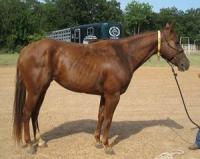Something every equestrian should know is how to evaluate the body condition of their horses. There are hundreds of charts and articles about this on the internet, as well as multiple Facebook groups that will help you with nutrition if you're struggling. I'm going to do a crash course here, along with some reminders that checking your horses BCS (body condition score) as well as assessing their general health and fitness level is something that should be done on an on-going basis.
There are six areas that we look at on horses to assess their BCS. These are the lumbar spinous processes, ribs, tailhead, right behind the scapula or shoulder, their neck, and their withers. The scale is a one through nine scale with one being emaciated and nine being severely obese.
Some advantages of this are that it is easy to perform, integrates all body areas, and helps owners assess for risks of disease or notice changes in their horses. Some disadvantages is that it only assesses subcutaneous fat, there can be differences between evaluators, and scores may vary between breeds or body types.
Each area is scored individually on the 1-9 scale then an average of those areas is taken to give an overall score, but as you grow more experienced in evaluating most people can just provide an overall score.
There are some industry standards for specific classes of horses to include breeding mares, stallions, and performance horses. Breeding mares should range between 6 and 7, stallions tend to have the best success at a 5 to 6, while performance horses typically have a 4 to 5.
This chart is simplified to give y'all an understanding. And you might look at it and say "why are performance horses at a 4? That's moderately thin!" And you'd be correct, it is moderately thin.
However, there is a vast difference between a super fit performance horse like a racehorse or barrel horse (compare them to an Olympic or top level human athlete) and one that is just thin because of a caloric deficit. The difference is a healthy thin and an unhealthy thin. The performance horse is an incredible athlete who just simply may not be able to maintain the extra fat due to the level of performing and training they are doing.
This is why being able to assess fitness levels alongside BCS is important. When someone is riding a thin horse that is not fit that's not a healthy decision for the horse whereas someone riding a very fit horse is.
Example of a fit horse at BCS 4




No comments
Post a Comment